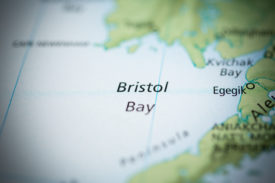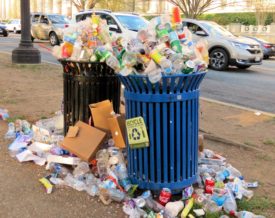Washington and Oregon fund their state environmental protection agencies more heavily from fees and taxes on polluters than many other American states. The two states’ environmental regulators get about three dollars in five from green taxes, such as the fees motorists pay at vehicle emissions inspections, permit fees from factories that generate a lot of air or water pollution, and taxes on solid waste and hazardous substances.
You’d think that generating so much revenue from green taxes would turbocharge pollution prevention by making prices tell the truth.
You’d be wrong: the peculiar design of the states’ green taxes and fees squanders almost all of the positive incentive they’d otherwise have.
The states’ various pollution fees and taxes are a thicket of complexity, and each fee is its own story, but one example neatly illustrates the general situation. It’s an example of the states’ better-conceived green fees: those charged to factories that generate hazardous waste.
In both states, companies that generate hazardous wastes are legally obligated to pay a fee for each pound of waste that they create. So far, so good. A per-pound fee, adjusted for the toxicity of the waste, is exactly what the polluter pays principle calls for.
Unfortunately, the state legislatures have given free passes to the biggest polluters. By law, the total amount that a company can pay in hazardous waste fees is $13,000 a year in Washington and $27,500 in Oregon.
How many firms fall below those caps? Most. In Washington, 90 percent of waste generators pay less than the cap. Sounds like it shouldn’t be a problem, right? Well, the 10 percent of Washington firms that generate enough waste to owe more than $13,000 a year tend to generate much more waste than their smaller peers. In fact, these giant polluters are titans of toxicity. They generate virtually all reported toxic waste in the state; in 2002, they pumped out 98 percent of the total! In Oregon, with its higher fee cap, a similar relationship holds: capped firms cook up most of the toxics.
What does this mean, in terms of unit pricing? The per-ton tax on generating toxics in Washington is about $75 for the first 170 tons. All subsequent tons are free. The more toxics you produce, in other words, the further you can amortize the cost. As a consequence, capped generators in Washington—the 10 percent of firms that generate 98 percent of the poison—end up paying $2 a ton or less.
Basically, by capping fees, Olympia and Salem offer bulk discounts for polluters.
So even before we get to a comprehensive tax shift, we might start by aligning existing green taxes with the objectives of the agencies they fund.







